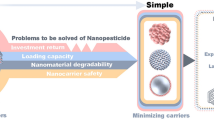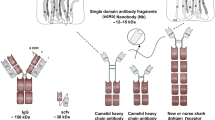Abstract
Every cell in our body depends on the electron transport processes in order to generate energy and function properly. Being able to regulate the metabolic activity of a cell would enable us altering its function and eventually lead us to a desired biological outcome at the cellular level and more desirably at a systemic level. Immunomodulatory or immunostimulatory molecules have been focus of the recent studies in order to regulate or boost the activities of the immune system cells and suppress or eliminate the disease conditions such as cancer, autoimmune reactions, inflammatory disorders as well as infections. In our study we used a ruthenium pyridyl thiocyanate complex, K330, to examine its effect on the activity of the innate immune system cells, macrophages in vitro. K330 was our candidate due to its application in the solar cells. Especially, due to its ability to get involved in electron transfer systems we hypothesized that it could change the activity of the immune system cells at cellular level, possibly by interfering the electron transfer reactions of the cells. Our results support our hypothesis since K330 lead to a significant increase in TNFα and IL1β cytokine production levels by LPS stimulated macrophages compared to only LPS treated control groups. Based on our in vitro results, K330 can also be utilized as an adjuvant candidate in vaccinations where the antigen itself is not sufficient to generate a proper immune response.




Similar content being viewed by others
Abbreviations
- TNF-α:
-
Tumor nacrosis factor-α
- IL-6:
-
Interleukin 6
- IL1β:
-
Interleukin 1β
- RAW 264.7:
-
Mouse macrophage cell line
- ELISA:
-
Enzyme linked immunosorbent assay
- LPS:
-
Lipopolysachharide
References
Ocakoglu K, Sogut S, Sarica H, Guloglu P, Erten-Ela S, Emen FM (2013) Influences of the electron donor groups on the properties of thiophene-pyrrole-thiophene and tert-butyl based new ruthenium II bipyridyl sensitizers for DSSCs and DFT studies. Synth Metals 174:24–32. https://doi.org/10.1016/j.synthmet.2013.04.016
Ocakoglu K, Zafer C, Cetinkaya B, Icli S (2007) Synthesis, characterization, electrochemical and spectroscopic studies of two new heteroleptic Ru(II) polypyridyl complexes. Dyes Pigm 75:385–394. https://doi.org/10.1016/j.dyepig.2006.06.016
Ocakoglu K, Harputlu E, Guloglu P, Erten-Ela S (2012) The photovoltaic performance of new ruthenium complexes in DSSCs based on nanorod ZnO electrode. Synth Metals. https://doi.org/10.1016/j.synthmet.2012.10.006
Buck MD, Sowell RT, Kaech SM, Pearce EL (2017) Metabolic instruction of immunity. Cell 169:570–586, https://doi.org/10.1016/j.cell.2017.04.004
Arango Duque G, Descoteaux A (2014) Macrophage cytokines: involvement in immunity and infectious diseases. Front Immunol 5:491. https://doi.org/10.3389/fimmu.2014.00491
Murray RZ, Stow JL (2014) Cytokine secretion in macrophages: SNAREs, Rabs, and membrane trafficking. Front Immunol 5:538. https://doi.org/10.3389/fimmu.2014.00538
Kawagishi C, Kurosaka K, Watanabe N, Kobayashi Y (2001) Cytokine production by macrophages in association with phagocytosis of etoposide-treated P388 cells in vitro and in vivo. Biochim Biophys Acta 1541(3):221–230. https://doi.org/10.1016/S0167-4889(01)00158-6
Cavaillon JM, (1994) Cytokines and macrophages. Biomed Pharmacother 48(10):445–453. https://doi.org/10.1016/0753-3322(94)90005-1
Scull CM, Hays WD, Fischer TH (2010) Macrophage proinflammatory cytokine secretion is enhanced following interaction with autologous platelets. J Inflam 7:53. https://doi.org/10.1186/1476-9255-7-53
Berghaus LJ, Moore JN, Hurley DJ, Vandenplas ML, Fortes BP, Wolfert MA, Boons GJ (2010) Innate immune responses of primary murine macrophage-lineage cells and RAW 264.7 cells to ligands of Toll-like receptors 2, 3, and 4. Comp Immunol Microbiol Infect Dis 33(5):443–454
Schmitz F, Mages J, Heit A, Lang R, Wagner H (2004) Transcriptional activation induced in macrophages by Toll-like receptor (TLR) ligands: from expression profiling to a model of TLR signaling. Eur J Immunol 34(10):2863–2873
Soromou LW, Zhang Z, Li R, Chen N, Guo W, Huo M, Guan S, Lu J, Deng X (2012) Regulation of inflammatory cytokines in lipopolysaccharide-stimulated RAW 264.7 murine macrophage by 7-O-methyl-naringenin. Molecules 17(3):3574–3585
Gasparini C, Foxwell BM, Feldmann M (2013) RelB/p50 regulates TNF production in LPS-stimulated dendritic cells and macrophages. Cytokine 61(3):736–740
Parameswaran N, Patial S (2010) Tumor necrosis factor-α signaling in macrophages. Crit Rev Eukaryot Gene Expr 20(2):87–103
Lopez-Castejon G, Brough D (2011) Understanding the mechanism of IL-1β secretion. Cytokine Growth Factor Rev 22(4):189–195. https://doi.org/10.1016/j.cytogfr.2011.10.001
Manderson AP, Kay JG, Hammond LA, Brown DL, Stow JL (2007) Subcompartments of the macrophage recycling endosome direct the differential secretion of IL-6 and TNFα. J Cell Biol 178(1):57. https://doi.org/10.1083/jcb.200612131
Zaccone P et al (1999 Jun) The involvement of IL-12 in murine experimentally induced autoimmune thyroid disease. Eur J Immunol 29(6):1933–1942
Zaccone P et al (2005) IL-18 binding protein fusion construct delays the development of diabetes in adoptive transfer and cyclophosphamide-induced diabetes in NOD mouse. Clin Immunol 115(1):74–79
Nicoletti F et al (1997) Prevention of spontaneous autoimmune diabetes in diabetes-prone BB rats by prophylactic treatment with antirat interferon-gamma antibody. Endocrinology 138(1):281–288
Fagone P et al (2018) Contribution of the macrophage migration inhibitory factor superfamily of cytokines in the pathogenesis of preclinical and human multiple sclerosis: in silico and in vivo evidences. J Neuroimmunol 322:46–56. https://doi.org/10.1016/j.jneuroim.2018.06.009
Su LC et al (2018) Emerging role of IL-35 in inflammatory autoimmune diseases. Autoimmun Rev 17(7):665–673. https://doi.org/10.1016/j.autrev.2018.01.017
Lee PW et al (2017 Mar) TGF-β regulation of encephalitogenic and regulatory T cells in multiple sclerosis. Eur J Immunol 47(3):446–453. https://doi.org/10.1002/eji.201646716
Nicoletti F et al (1998 Jul) Blood levels of transforming growth factor-beta 1 (TGF-beta1) are elevated in both relapsing remitting and chronic progressive multiple sclerosis (MS) patients and are further augmented by treatment with interferon-beta 1b (IFN-beta1b). Clin Exp Immunol 113(1):96–99
Broide DH (2009) Immunomodulation of allergic disease. Annu Rev Med 60:279–291
Iwalewa EO, McGaw LJ, Naidoo V, Eloff JN (2007) Inflammation: the foundation of diseases and disorders. A review of phytomedicines of South African origin used to treat pain and inflammatory condition. Afr J Biotechnol 6(25):2868–2885
Hancock REW, Nijnik A, Philpott DJ (2012) Modulating immunity as a therapy for bacterial infections. Nat Rev Microbiol 10:243–254
Kaufmann, T, Simon H (2015) U. Targeting disease by immunomodulation. Cell Death Differ 22:185–186
Julier Z, Park AJ, Briquez PS, Martino MM (2017) Promoting tissue regeneration by modulating the immune system Acta Biomaterialia 53:13–28
Khalil DN, Smith EL, Brentjens RJ, Wolchok JD (2016) The future of cancer treatment: immunomodulation, CARs and combination immunotherapy. Nat Rev Clin Oncol 13(5):273–290. https://doi.org/10.1038/nrclinonc.2016.25
Tan TT, Coussens LM (2007) Humoral immunity, inflammation and cancer. Curr Opin Immunol 19(2):209–216. https://doi.org/10.1016/j.coi.2007.01.001
Daniel CS, Ira M (2013) Oncology meets immunity. Immunity 39(1):1–10. https://doi.org/10.1016/j.immuni.2013.07.012
Guevara-Patiño JA, Turk MJ, Wolchok JD, Houghton AN (2003) Immunity to cancer through immune recognition of altered self: studies with melanoma. Adv Cancer Res. 90:157–177. https://doi.org/10.1016/S0065-230X(03)90005-4
Valdés-Ramos R, Benítez-Arciniega A (2007) Nutrition and immunity in cancer. Br J Nutr 98(S1):S127–S132. https://doi.org/10.1017/S0007114507833009
Grivennikov SI, Greten FR, Karin M, (2010) Immunity inflammation, and cancer. Cell 140(6):883–899. https://doi.org/10.1016/j.cell.2010.01.025
Rakoff-Nahoum S (2006) Why cancer and inflammation? Yale J Biol Med 79(3–4):123–130
Coussens LM, Werb Z (2002) Inflammation and cancer. Nature 420(6917):860–867. https://doi.org/10.1038/nature01322
Nicoletti F et al (1997 Jun) Prevention of endotoxin-induced lethality in neonatal mice by interleukin-13. Eur J Immunol 27(6):1580–1583
Gérard C et al (1993) Interleukin 10 reduces the release of tumor necrosis factor and prevents lethality in experimental endotoxemia. J Exp Med 177(2):547–550
Raphael I, Nalawade S, Eagar TN, Forsthuber TG (2015) T cell subsets and their signature cytokines in autoimmune and inflammatory diseases. Cytokine 74(1):5–17. https://doi.org/10.1016/j.cyto.2014.09.011
Dujmovic I et al (2009) The analysis of IL-1 beta and its naturally occurring inhibitors in multiple sclerosis: the elevation of IL-1 receptor antagonist and IL-1 receptor type II after steroid therapy. J Neuroimmunol 207(1–2):101–106. https://doi.org/10.1016/j.jneuroim.2008.11.004
Dayer JM (2018) From supernatants to cytokines: a personal view on the early history of IL-1, IL-1Ra, TNF and its inhibitor in rheumatology. Arthritis Res Ther 20(1):101. https://doi.org/10.1186/s13075-018-1607-y
Karin N et al (2018) Autoantibodies to chemokines and cytokines participate in the regulation of cancer and autoimmunity. Front Immunol. 9:623. https://doi.org/10.3389/fimmu.2018.00623. (eCollection 2018)
Barcellini W (1996 Apr) In vitro type-1 and type-2 cytokine production in systemic lupus erythematosus: lack of relationship with clinical disease activity. Lupus 5(2):139–145
Acknowledgements
I greatly appreciate the material supports of Prof. Dr. Kasım Ocakoglu from Tarsus University and Prof. Dr. Juan Anguita from CICBiogune.
Author information
Authors and Affiliations
Corresponding author
Ethics declarations
Conflict of interest
The author declare no competing financial or non-financial conflict of interest.
Rights and permissions
About this article
Cite this article
Ayaz, F. Ruthenium pyridyl thiocyanate complex increased the production of pro-inflammatory TNFα and IL1β cytokines by the LPS stimulated mammalian macrophages in vitro. Mol Biol Rep 45, 2307–2312 (2018). https://doi.org/10.1007/s11033-018-4392-4
Received:
Accepted:
Published:
Issue Date:
DOI: https://doi.org/10.1007/s11033-018-4392-4




